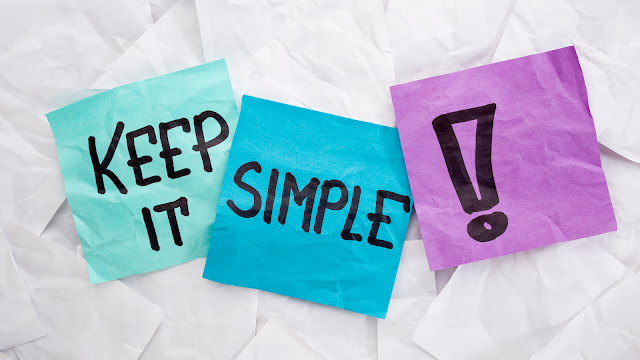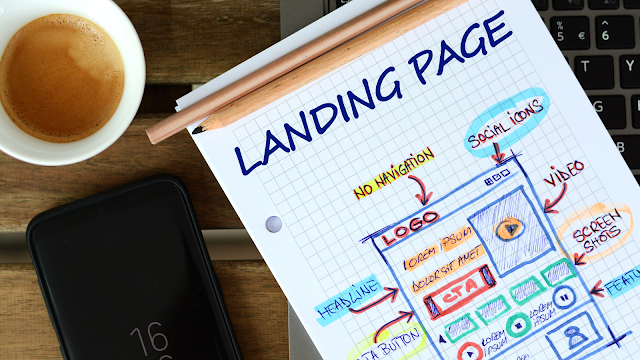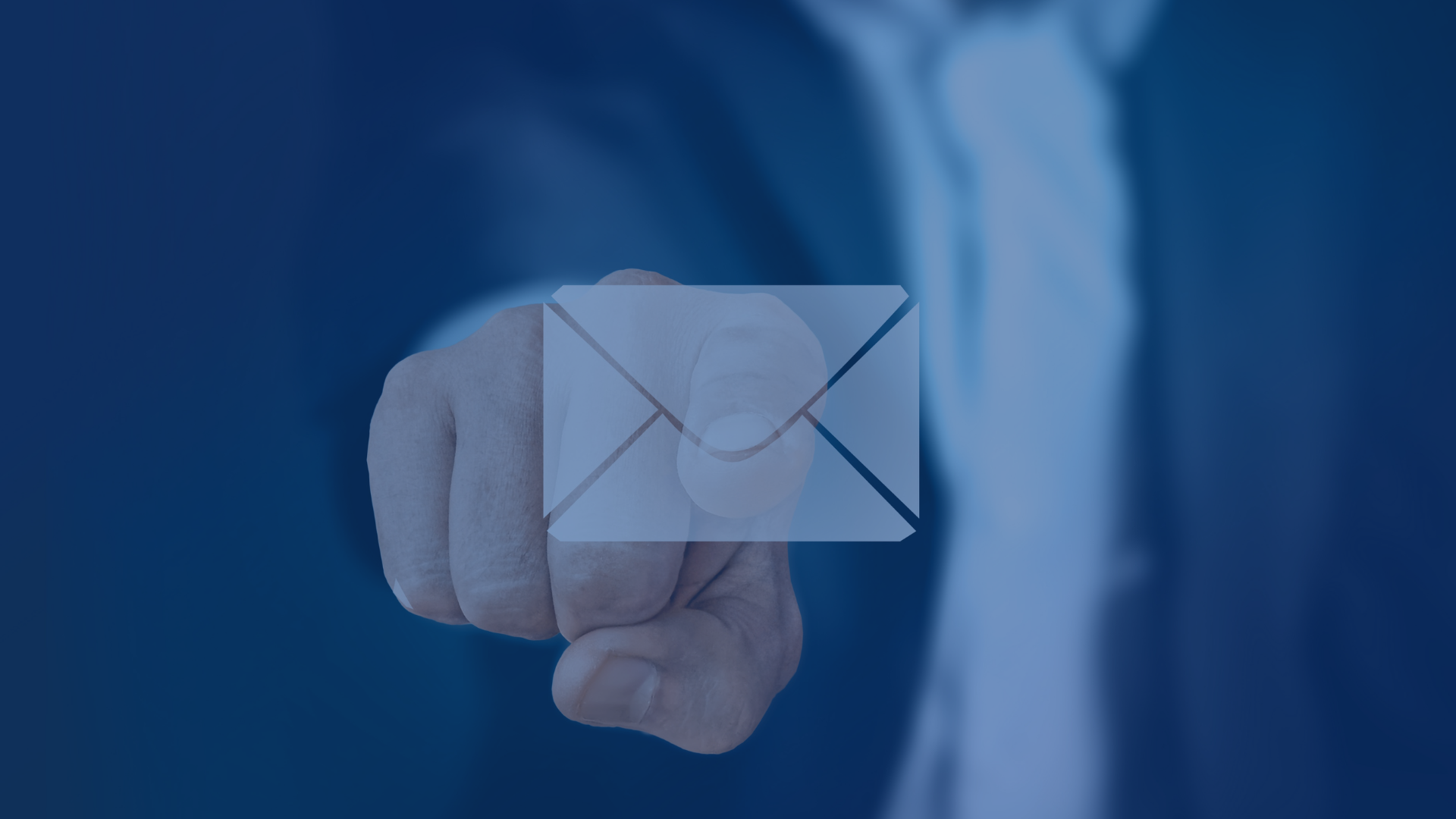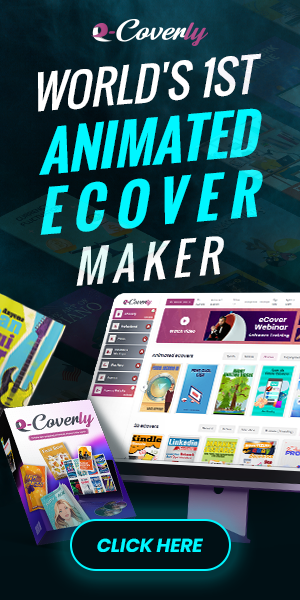From Click To Convert How To Design Landing Pages That Get Results
Are you sick of investing all of your passion and effort into your internet marketing strategies only to receive underwhelming results? Do you feel as though you are screaming into space and nobody is paying attention or responding? If so, you are not by yourself.
It's not enough to just create a website and hope for the best in today's congested internet industry. You need a calculated strategy that breaks through the clutter and engages your audience, inspiring them to act. And landing pages come into play here.
The secret weapon of effective internet marketers is landing pages. A landing page is completely focused on one single goal: persuading visitors to do a desired action, such as filling out a form, making a purchase, or signing up for a subscription. This is in contrast to your main website, which may contain several objectives and distractions.
But why are landing pages so important for the success of internet marketing? They simply function. According to studies, companies with 10-15 landing pages get 55% more leads than those with just one or two. Furthermore, 400% more conversions may be achieved by using landing pages.
Therefore, it's time to start employing landing pages as part of your internet marketing plan if you haven't previously. But how do you get started? How are landing pages created that are effective? This article fills that need.
We'll go over all you need to know about creating landing pages that convert into the parts that follow. We'll talk about things like audience analysis, goal-setting, simplicity, headlines, copywriting, graphics, social proof, and optimization. You'll have a firm grasp of how to design landing pages that draw interest, foster trust, and encourage conversions by the conclusion of this article.
So, strap up and get ready to learn if you're eager to advance your internet marketing. Let's start now!
Know Your Audience
Having a clear grasp of your target audience is crucial for building landing pages that convert. How can you create a website that speaks directly to their wants, desires, and pain areas if you don't know who you're attempting to reach?
Because of this, the first step in creating a landing page is always to thoroughly research your target audience. By doing this, you'll be able to design a page that really connects with them, fostering trust and eventually increasing conversions.
So how do you go about conducting audience research? To get you started, consider these suggestions:
Use data to your advantage
Gathering as much information as you can is the first step to knowing your audience. Insights from social media, consumer surveys, website analytics, and other sources may be included. Look for patterns and trends in the data that might help you understand the choices and habits of your audience.
Create customer personas
Making up consumer personas is a powerful strategy for engaging your audience. Based on data and insights, these are fictitious representations of your ideal clients. It will be simpler to develop landing pages that appeal to your audience if you can give them a face and a narrative by establishing personas for them.
Listen to your audience
Listening to your consumers is a crucial component of audience research. This can entail keeping an eye on discussions on social media, reviewing reviews and user comments, or interviewing customers. You may utilize the requirements, wants, and pain points of your audience to inform the design of your landing page by paying attention to them.
Once you have a thorough grasp of your target market, you can use that knowledge to guide the design of your landing page in a variety of ways. Here are a few illustrations:
Tailor your messaging
You may craft your messaging to speak directly to your audience by being aware of their requirements and preferences. Use language that speaks to their concerns and provides answers to their issues. Make it apparent why they should choose your product or service.
Choose the right imagery
Your landing page's ability to connect with your audience may also be greatly influenced by the images you select for it. Use imagery that relates to your audience's beliefs and tastes while showcasing the advantages of your product or service.
Optimize your form fields
Finally, knowing your target can help you design your form fields for the most conversions possible. You can decrease friction and boost the probability that visitors will convert by requesting just the information that is crucial to your audience and making the form as simple and clear as feasible.
In other words, creating landing pages that convert is impossible without first well comprehending your target. You can develop pages that really connect with your target consumers, fostering trust and boosting conversions, by investing the time to thoroughly analyze your audience and using that data to guide your design.
Set Clear Goals
Setting specific, attainable goals is essential for creating a landing page that generates results. Without specific objectives, it is hard to determine whether your landing page is effective and you cannot make data-driven decisions to improve it.
But choosing a number and aiming to reach it isn't the only part of goal-setting. You must make landing page objectives that are in line with the requirements and preferences of your target audience. This is how you do it:
Identify your audience's pain points
Finding your audience's pain issues is the first step in developing landing page goals. What issues are they trying to address? What difficulties do they encounter? You may develop objectives that are in line with the demands of your audience by being aware of these pain areas.
If you're offering a weight loss solution, for instance, your target market's pain points may include the need to lose weight rapidly and securely, without feeling hungry or starved. An appropriate objective in this situation may be to encourage more people to join a free weight loss program.
Choose goals that are measurable
After determining the problems that your audience is experiencing, you must select quantifiable goals. Setting explicit goals that you can follow and evaluate over time entails doing this. Examples of quantifiable landing page objectives are as follows:
- Increase conversions by X%
- Reduce bounce rate by X%
- Increase time spent on the page by X seconds
- Increase sign-ups by X%
You may monitor your progress and make data-driven decisions to improve your landing page's performance by defining quantifiable targets.
Align your goals with your audience's needs
Last but not least, it's critical to check that the objectives of your landing page correspond to those of your audience. This requires selecting objectives that are both relevant to and consistent with the ultimate objectives of your audience.
For instance, increasing the number of people signing up for a free trial may be a successful landing page objective if you're offering a productivity tool. This objective is consistent with your audience's desire to become more productive, and it also provides them with actual value by enabling them to test out your solution before making a purchase.
In other words, creating landing pages that provide results requires establishing specific, quantifiable goals. You can design landing pages that truly benefit your visitors, fostering trust and increasing conversions, by determining their pain spots, selecting measurable objectives, and matching those goals to their requirements.
Keep it Simple
Simplicity is essential when creating a landing page that generates results. Visitors may become disinterested and leave a landing page if it is busy or unclear, which results in missed possibilities for conversions and purchases.
So how can you maintain a straightforward and efficient landing page? Here are a few pieces of advice:
Streamline your layout
Streamlining your layout is one of the simplest methods to make your landing page simpler. Maintain a simple, clutter-free style with lots of white space to help your content shine out. To help visitors navigate the website, use a clear hierarchy of headers and subheadings. Also, make sure your call to action (CTA) is visibly marked and simple to discover.
Use concise and compelling copy
Your landing page copy should be succinct, understandable, and persuasive. Break up your text into manageable bite-sized portions using headers and subheadings, and use bullet points to draw attention to important characteristics or advantages. Avoid using jargon or other technical terminology that could confuse your visitors and keep your language straightforward.
Use high-quality visuals
Visuals may be an effective technique for streamlining the design of your landing page. When showcasing your goods or services, utilize crisp photos and videos. You may also use graphics or symbols to break up text and provide visual appeal. To avoid cluttering your page and taking away from your content, don't use too many images.
Provide a clear value proposition
Your landing page has to make the value proposition of your good or service very obvious. This entails describing how you differ from your rivals and how your product or service might assist visitors in resolving issues or achieving their objectives. Make sure that your value proposition is clearly visible on your page and that it is kept straightforward and simple to grasp.
What then does a straightforward yet potent landing page look like? Here are a few illustrations:
Dropbox: The landing page for Dropbox is an excellent illustration of a straightforward and useful design. The page has a neat, uncomplicated style, a standout CTA, and a clear value proposition.
Squarespace: The landing page for Squarespace employs clear content and top-notch images to highlight the advantages of their website builder. The page has a clear CTA and is simple to browse.
Basecamp: Another excellent example of a straightforward and efficient design is the landing page for Basecamp. Visitors are guided through the content of the page using a clear hierarchy of headers and subheadings, and the page has a standout CTA that is difficult to miss.
When it comes to creating landing pages that work, simplicity is essential. You can develop landing pages that are simple to understand, navigate, and convert by simplifying your layout, utilizing succinct and enticing language, employing high-quality imagery, and offering a clear value proposition.
Use Clear and Compelling Headlines
Possibly the most crucial component of any landing page is the title. Visitors will notice it right away, and that's what will draw them in and persuade them to read more. It might be difficult to create a headline that is both clear and interesting. So how can you write headlines that are compelling and convey information? Here are some tips:
Be clear and concise
The value proposition of your product or service should be communicated in just a few words in your headline, which should be clear and succinct. Focus on using plain language that everybody can comprehend instead of utilizing jargon or technical phrases that can confuse your visitors.
Use strong action words
Strong action verbs are an effective technique for writing catchy headlines. Words like "discover," "transform," "unlock," and "master" might serve to engender a feeling of urgency and urgency, which can motivate visitors to act.
Highlight the benefits
Instead of merely listing the attributes of your product or service, your headline should emphasize its advantages. For instance, you may state "Streamline your workflow with our all-in-one software" instead of "Our software has 50 different features."
Test and refine
Test several headline variants to determine which ones perform the best. Compare several headlines using A/B testing to see which ones lead to the most clicks and conversions. Your headlines should be improved over time to maintain their effectiveness.
What do concise and alluring headlines actually look like in use? Here are a few examples:
Dropbox: A fantastic example of a succinct and straightforward title that highlights the advantages of a service is the one used by Dropbox: "Bring your photos, docs, and videos anywhere and keep your files safe."
Slack: The slogan "Where work happens" from Slack is another excellent illustration of a straightforward but captivating headline. Without going into great depth, it conveys the concept that Slack serves as the focal point for all of your work-related tasks.
Basecamp: "All your projects, discussions, and files in one place" is the succinct and simple tagline of Basecamp, which underlines the advantages of their project management software.
For drawing attention and conveying value on your landing page, clear and captivating headlines are essential. You can write headlines that stand out and compel readers to act by being succinct and precise, using powerful action verbs, emphasizing the advantages, and testing and improving over time.
Create a Compelling Copy
The text on your landing page is crucial for turning visitors into buyers. Visitors can be persuaded to take action by reading engaging material, which might include completing forms, making purchases, or signing up for free trials. However, how can you write copy that connects with your audience and motivates them to act? Here are some tips:
Address your audience's needs and desires
Your text should highlight how your product or service may help your audience by meeting their needs or solving their issues. Highlight the special selling features that set your business apart from the competition and use language that speaks directly to your customers and their problems.
Keep it simple and scannable
Keep in mind that most people will scan your landing page rather than reading every word, so make it easy to scan. To break up the content and make it easier to read, use headers, bullet points, and short paragraphs.
Use social proof
Using social proof to establish credibility and trust with your audience may be quite effective. Show visitors that others have had good experiences with your product or service by using customer testimonials, case studies, and reviews.
Create a sense of urgency
Imbuing visitors with a feeling of urgency might encourage them to take action. To entice customers to move fast, use language that highlights scarcity, such as "limited time offer" or "only a few spots left".
So, how does effective copy actually appear? Here are a few illustrations:
Squarespace: The benefits of Squarespace's website builder are well-expressed in the language on its landing page. They leverage social proof in the form of client testimonials and emphasize usability and professional-looking designs to fulfill the demands and aspirations of their target audience.
Shopify: The benefits of Shopify's e-commerce platform are easily understood because of the clear headers and bullet points in their concise, scannable content. In order to gain the audience's trust, they also employ social proof in the form of customer success stories.
Airbnb: The content on Airbnb's landing page is an excellent illustration of how to use language to convey a feeling of urgency. They draw attention to the limited number of available listings in a specific area and push guests to book right away.
For visitors to convert to your landing page, you must write enticing material. You can write content that connects with your audience and motivates them to act by addressing their wants and aspirations, keeping it short and scannable, using social proof, and conveying a feeling of urgency.
Use Visuals to Enhance Engagement
On your landing page, visuals are a great tool for capturing attention and communicating value. The correct graphics may captivate your audience and compel them to act, whether it's through an arresting image, an educational film, or an attractive design. Here are some pointers for making the most of visuals:
Use high-quality images
The worth of your product or service may be communicated with the use of high-quality photographs. Make sure your photographs are high-resolution, relevant, and aesthetically attractive. You could also want to use pictures of your product or service in use.
Incorporate video
Video may be a powerful tool for showcasing your goods or services and giving more detailed information than still photos or text. Use a video that highlights the advantages of your item or service or explains how it works.
Use visual hierarchy
The placement of design components on a page to convey their relative significance is known as a visual hierarchy. Use size, color, and contrast as design components to draw visitors' attention to the most crucial elements of your website, such as your call-to-action button.
Make it mobile-friendly
It's crucial to make sure your images are optimized for mobile as more and more people are using mobile devices to access the internet. To ensure that your graphics appear excellent on any device, use responsive design.
What then does a successful visual design look like in real life? Here are a few examples:
Dropbox: The value of Dropbox's product is communicated using a straightforward yet impactful picture on its home page. The illustration demonstrates how Dropbox can be used for file sharing and collaboration, which is a major selling point for the platform.
Slack: Slack's main page combines text and visuals to highlight the advantages of its chat service. To direct visitors' attention to the most crucial elements of the website, such as its call-to-action button, they employ visual hierarchy.
Grammarly: Video is used on Grammarly's landing page to highlight the advantages of their writing assistance product. The tool is demonstrated in the movie along with several examples of how users may use it to enhance their writing.
The design of a good landing page must include visuals. You may captivate your audience and influence them to act by utilizing high-quality photos, including video, leveraging visual hierarchy, and making your graphics mobile-friendly. You can make landing pages that are not only aesthetically pleasing but also successful at turning visitors into buyers by applying these pointers and examples.
Add Social Proof
Building reputation and trust is crucial in the congested internet market of today. Utilizing social proof on your landing page is one of the best methods to do this. Social proof is the concept that suggests people are more inclined to believe what others say and do and behave accordingly. The following advice will help you add social proof to your landing page:
Use customer testimonials
Customer reviews are an effective type of social evidence. They demonstrate that actual customers have benefitted from and used your item or service. Use precise, in-depth testimonials that emphasize the main advantages of your product or service.
Display social media shares
Display any social media shares or mentions of your product or service that have occurred on your landing page. This demonstrates that people like and trust your product or service.
Include trust badges
Symbols or emblems known as "trust badges" can be used to show that your website is safe, that you have won recognition or awards, or that you have been mentioned in the media. With visitors, these badges may aid in establishing credibility and confidence.
Show off your customer base
Showcase your broad and varied consumer base on your landing page. Visitors who might be hesitant to test a new product or service might benefit from this by seeing that you are credible and trustworthy.
What does practical social evidence look like then? Here are a few illustrations:
Amazon: Customer reviews are one way that Amazon employs social proof. They make it simple for visitors to know what other users think of a product before making a purchase by prominently displaying star ratings and reviews on their product pages.
HubSpot: Customer logos are used on HubSpot's landing page to highlight its clientele. Demonstrating that other companies utilize and trust their services, helps to increase visitors' levels of trust and credibility.
Airbnb: To establish trustworthiness with future visitors, Airbnb combines user reviews, social media sharing, and trust badges. They prominently promote user reviews and ratings, highlight their collaborations with reputable travel companies, and display badges proving their website's reliability and security.
A strong method for establishing credibility and trust on your landing page is social evidence. You can convince visitors to trust and take action on your landing page by providing client testimonials, displaying social network shares, integrating trust badges, and demonstrating your customer base. With the help of these guidelines and illustrations, you can design landing pages that not only look amazing but also help you establish credibility and trust with your audience.
Optimize for Conversion
Congratulations! You've worked hard to create a landing page that speaks to your audience, solves their problems, and eloquently conveys the benefits of your good or service. then what? How can you be confident that your landing page is truly converting visitors into customers and bringing in money for your company?
Optimizing is the solution. You can determine what's working and what isn't by testing and making adjustments to the design, text, and calls-to-action on your landing page. This can help you make data-driven choices to increase your conversion rates.
Here are some suggestions for landing page optimization to increase conversions:
Define your conversion goals: Knowing what you're optimizing for is necessary before you can optimize for conversions. Whether it's completing a form, making a purchase, or downloading an ebook, your landing page should have specific, quantifiable goals.
Use A/B testing: A/B testing, also known as split testing, is building two variations of your landing page and comparing how each one performs. To find out what appeals to your audience, try various headlines, copy, graphics, and calls to action.
Make incremental changes: When evaluating your landing page, it's crucial to make little adjustments rather than a whole redesign. This enables you to pinpoint the precise adjustments that are responsible for the increase in conversions.
Focus on your call-to-action: On your landing page, the call-to-action (CTA) is the most crucial component. Make sure it's aesthetically appealing, interesting, and action-focused. To determine what works best, experiment with alternative button locations, text, and colors.
Optimize for mobile: Your landing page must be optimized for mobile as more and more people use their mobile devices to browse the internet. Make sure your page loads quickly and is simple to browse on a small screen.
Use analytics: Utilize analytics programs like Google Analytics to monitor the effectiveness of your landing page and pinpoint its weak points. To determine how well your page is performing, look at data like bounce rate, time on page, and conversion rate.
Examples of landing pages that have been enhanced for conversion are shown below:
Slack: The landing page for the messaging app features a crystal-clear headline and CTA that conveys the benefits of the offering. Additionally, they employ social evidence in the form of client endorsements and testimonies.
Airbnb: The homepage page for the home-sharing site has crisp pictures and a distinct CTA. In order to increase conversions, they also exploit urgency and scarcity, using phrases like "Book unique places to stay and things to do" and "Only a few spots left!"
Uber: The landing page for the ride-sharing firm is uncomplicated and uncomplicated, with a clear header, a large CTA button, and a photograph of a satisfied client. Testimonials are another sort of social proof that they employ.
You may improve your landing page for optimum conversions and increase money for your company by paying attention to these pointers and examples.
You've successfully finished reading the article! You need to have a firm grasp on how to create landing pages that provide results by this point.
To sum up, we've spoken about how important it is to know your audience, establish clear goals, keep things simple, use engaging headlines, write compelling text, increase engagement with graphics, include social proof, and optimize for conversion.
But keep in mind that creating successful landing pages is a continuous process that calls for testing, iteration, and optimization. Never be scared to try new ideas and keep honing your strategy until you discover what works best for your company and your target market.
Put everything you've learned into practice right now. Examine your own landing pages to discover where you can provide more value using the advice we've provided. Check out our blog for more information on the web marketing and design if you want any further direction or inspiration.
Thanks for reading and happy designing!













